Global maritime security market is estimated to be valued at USD 26.72 Bn in 2025 and is expected to reach USD 43.78 Bn by 2032, exhibiting a compound annual growth rate (CAGR) of 7.3% from 2025 to 2032.
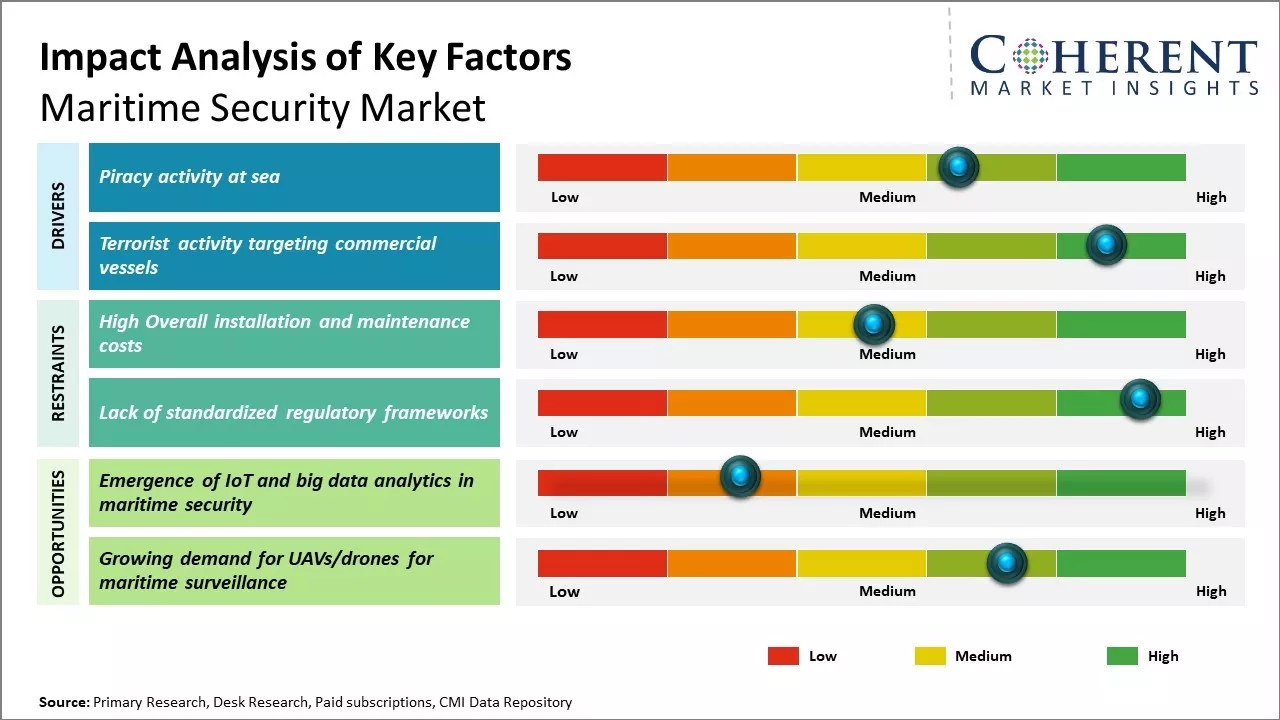
Discover market dynamics shaping the industry: Download Free Sample
Global maritime security market is expected to witness significant growth over the forecast period due to growing geopolitical threats at sea and rising instances of piracy and terrorism. Furthermore, increasing efforts by governments and ports authorities to enhance maritime domain awareness for ensuring safe and secure international waters boosts demand for maritime security solutions. Advancements in surveillance technologies such as integration of IoT, analytics and artificial intelligence are further expected to provide new opportunities for the market players. However, resistance from regulatory bodies and privacy concerns related to use of certain surveillance technologies can hamper the market growth. Market players are focusing on development of advanced and integrated systems with an aim to automate security processes, and this can drive the growth of maritime security market in the near future.
Market Driver: Piracy activity at sea
One of the key drivers for the growth of maritime security market is rise in piracy activity across major trade routes and sea lanes globally. While piracy at sea has been an issue for centuries, the scope and impact of such criminal activities has increased substantially over the past couple of decades. Asia Pacific, Africa and Latin America countries have witnessed increase in attacks on merchant and commercial vessels by pirate groups. These pirate gangs are often well organized and launch rapid attacks to seize cargo and demand ransom. Some of the major areas that have been impacted include the waters off Somalia and West Africa coastlines.
According to reports, the Gulf of Guinea witnessed over 90 pirate attacks in 2020, thus, making it an area with highest piracy risk in the world. Billions of dollars of cargo is transported through this region annually on trade routes linking Europe and Asia. Even a small number of successful pirate attacks can lead to massive financial losses for shipping companies. These also disrupt the global supply chains of numerous industries reliant on maritime transport. With increased globalization and just-in-time manufacturing practices, even short-term disruptions can have far reaching ripple effects. This has forced ship owners and operators to raise security levels and invest in anti-piracy solutions to safeguard their assets. Governments have been compelled to boost maritime security by deploying more coast guard assets and naval ships for protection and surveillance operations.
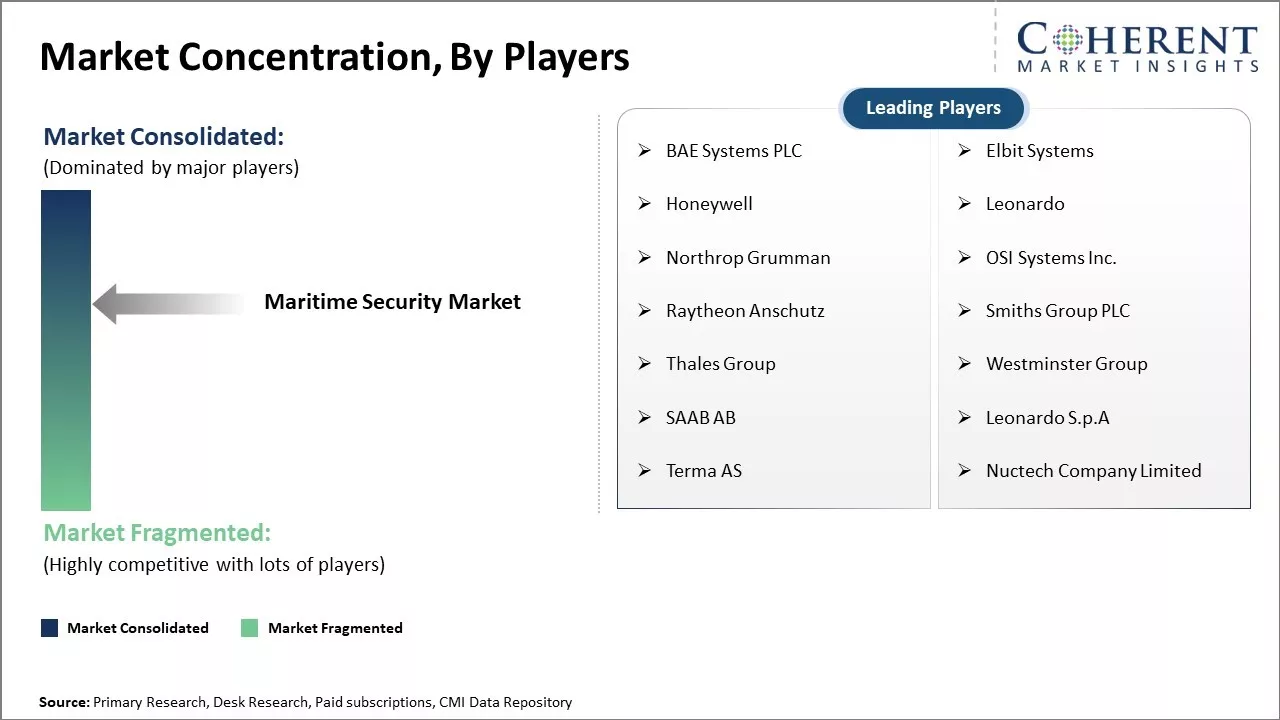
Get actionable strategies to beat competition: Download Free Sample
Terrorist activity targeting commercial vesselsAnother key factor driving growth of maritime security market is increased threat of terrorist and militant groups targeting commercial ships and ports globally. While piracy is often motivated by financial gain, terror attacks aimed at sinking or hijacking commercial vessels tend to have stronger geopolitical and ideological goals of instilling fear and disrupting international trade and commerce. Some of the major incidents include the 2000 bombing of the USS Cole in Yemen and the 2002 bombing of the French tanker Limburg near Yemen. The ability of terrorist groups to plan and carry out complex naval attacks poses a serious ongoing risk. Experts warn terrorist organizations may seek to acquire weapons like submarines or explosive-laden small boats to wreak even greater havoc.
Ports and harbors which act as vital nodes of the global economy have also emerged as attractive targets. A successful terror attack could paralyze port operations for extended periods and impact billions of dollars in cargo traffic.
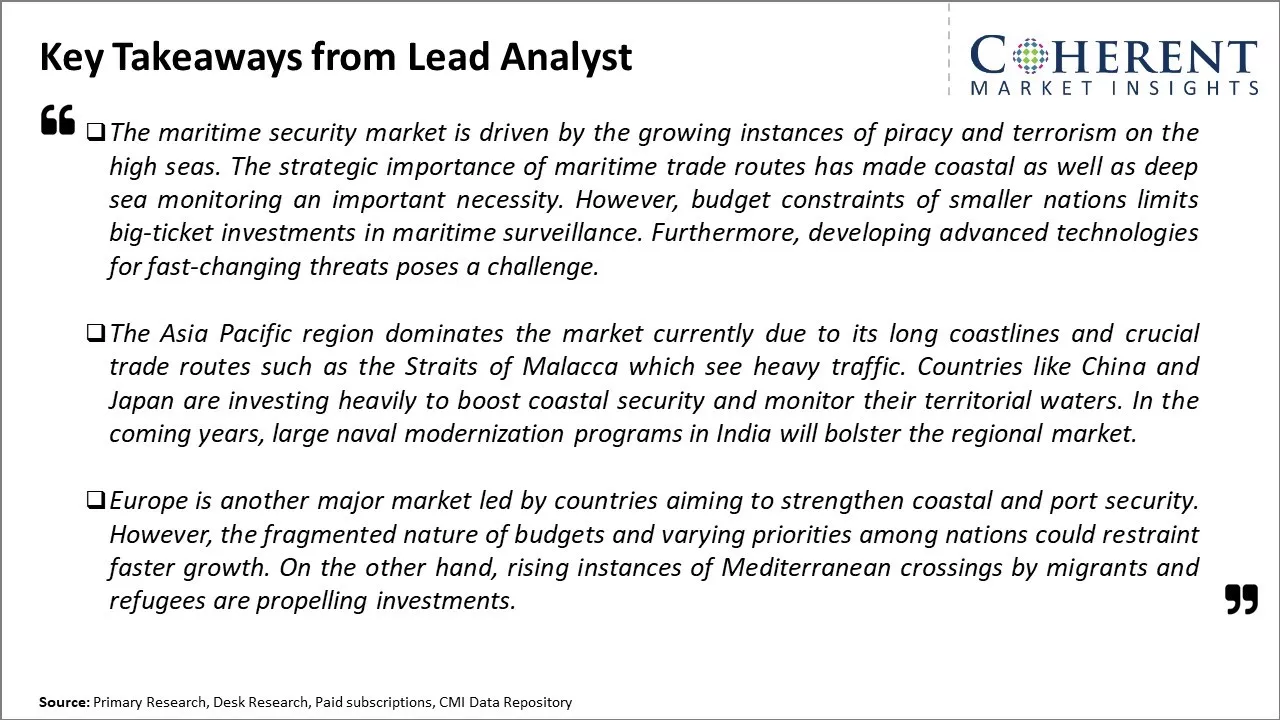
To learn more about this report, Download Free Sample
Market Challenges: High Overall installation and maintenance costs
Traditional threats from piracy and human smuggling persist and adapting technology is costly for many operators. Emerging non-traditional threats like terrorism make protecting vessels and infrastructure more complex. Regulations vary globally, complicating the development of interoperable systems. Budget constraints challenge further investment for many navies and coast guards. Economic turmoil from the pandemic has intensified cost pressures across the industry.
Market Opportunities: Emergence of IoT and big data analytics in maritime security
Digitalization trends allow for innovative surveillance and threat detection tools using low-cost sensors and big data analysis. Automation technologies support more efficient monitoring over larger areas. As commercial shipping adapts to new fuels and materials, security providers can develop specializations. Growth in underwater domains and distant fisheries widens the scope for protection. Partnerships between private firms and government agencies show promise for joint capability development.
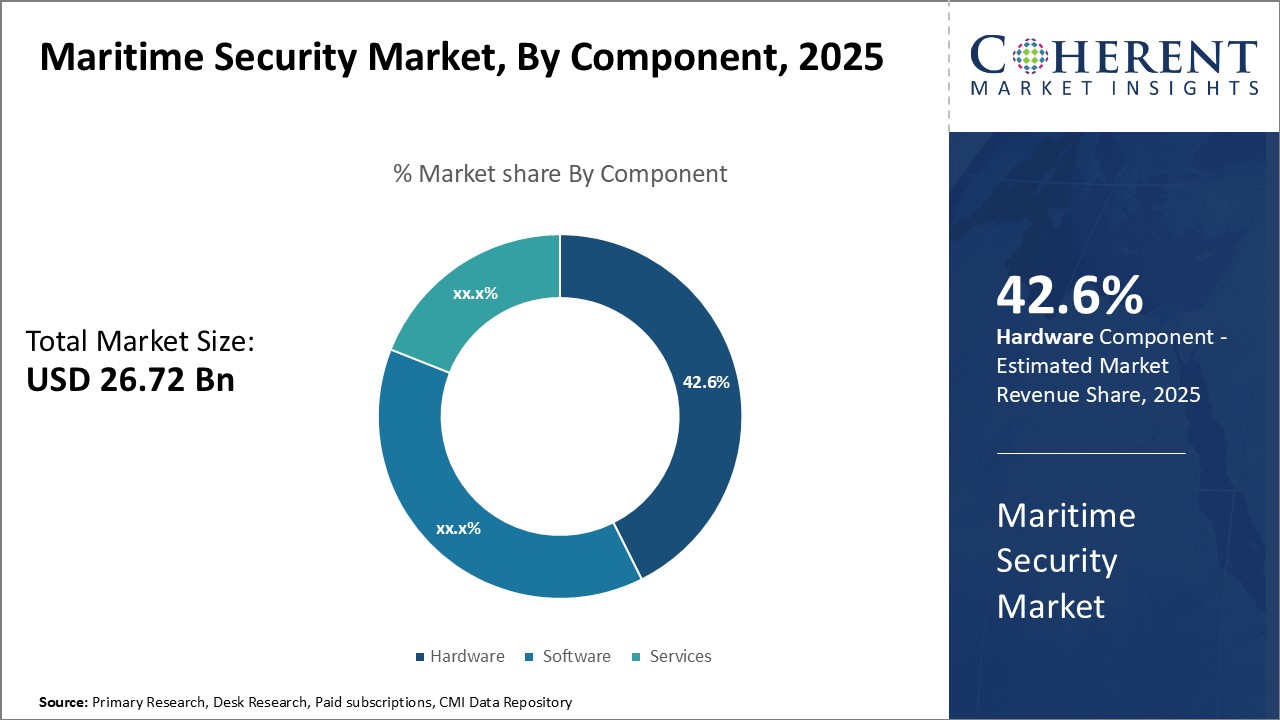
Discover high revenue pocket segments and roadmap to it: Download Free Sample
Insights, By Component- Investments in advanced technology boosts demand for hardwareAmong component segment of the maritime security market, hardware segment is estimated to contribute the largest share due to its core role in equipping systems with functionality. Hardware such as radar systems, video cameras, access control devices and biometric readers form the backbone technologies used across ports, vessels and coastal monitoring applications. Investments made by governments and port authorities in procuring state-of-the-art hardware boosts demand for these hardware.
There is growing emphasis on incorporating more resilient and intelligent hardware capable of withstanding harsh marine environments. Next-generation hardware integrated with features like thermal imaging, night vision and autonomous detection is being favored to achieve round-the-clock transparency. Ship owners prefer robust hardware delivered by reputed manufacturers to safeguard assets worth millions of dollars. Hardware manufacturers focuses on product differentiation through rigorous testing and customized solutions.
Integration of hardware with analytics and AI-based software is revolutionizing solutions. Edge devices powered by advanced processors allow real-time monitoring and quick threat responses. Infrastructure projects involving modernization of ports and creation of smart borders augur well for sustained hardware purchases. Investments made in coastlines by maritime administrations to fortify national security strengthens hardware demand too. The variety of use cases reinforces the need for versatile, durable and future-proofed hardware systems.
Insights, By Technology- Secure connectivity enablement boosts communications segment
Among technology segment, communications segment is estimated to contribute the largest market share due to its critical role in enabling secure data transmission. Dependable connectivity forms the spine of any maritime security framework, be it sharing surveillance feeds, coordinating response teams or tracking vessel movements. Technologies centered around providing robust communication channels thus see widespread uptake.
Systems requiring linkage between diverse on-shore and off-shore assets boosts deployment of wireless and satellite communication hardware. Solutions ensuring seamless transfer of voice, video and sensor data between command centers and patrol units regardless of location spur investments. Emergence of new broadband satellite constellations boosts accessibility of high-speed connectivity in remote waters.
Integration of advanced networking capabilities within hardware and software platforms is expected to drive the growth of communications segment. Interfaces allowing unified visibility and management of distributed security applications gain popularity. Efforts to deploy multicountry maritime communication networks coordinated through regional alliances strengthens connectivity enablers' value proposition too. Service providers also focus on tailoring offerings specialized for naval and coast guard needs.
Insights, By Type- Stringent compliance and facility expansion fuels port security market
Among type, port and critical infrastructure security segment is estimated to account for the largest share as maritime ports represent primary economic gateways. Burgeoning ship traffic and commodity exchange volumes amplify the need for strengthened port security. Governments prioritize fortifying major ports in line with mandatory compliance regulations and facility expansion plans.
The International Ship and Port Facility Security (ISPS) Code prescribes minimum security arrangements that must be upholded by ports. Adhering to protocols for access control, monitoring, training and emergency response stimulates port security system investments. Mega infrastructure projects involving construction of new terminals and port economic zones fuel incorporation of cutting-edge solutions.
Customs authorities also collaborate with ports to leverage advanced screening technologies for verifying cargo manifests and detecting contraband. Initiatives are afoot to install intelligent perimeter protection systems and integrate operations onto centralized command platforms. Maritime ports welcoming larger container ships and cruise liners require sophisticated security networks ensuring staff and passenger safety as well. The foregoing factors cumulatively drive higher budgetary allocations for bolstering port security infrastructure.
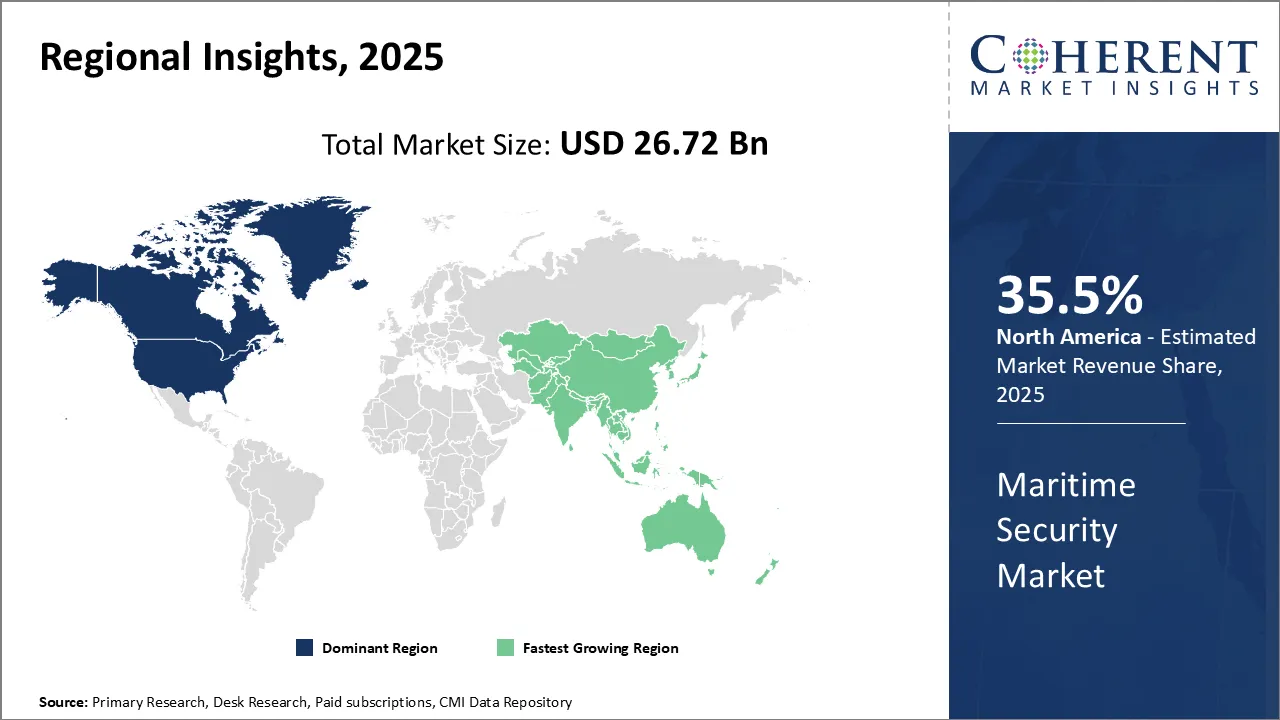
Need a Different Region or Segment? Download Free Sample
North America has dominated the global maritime security market for years and continues to hold the largest share. The region has the most robust defense budgets and has been actively investing in enhancing the security of its coastal borders and ports especially post 9/11. Most of the large maritime security solution providers and system integrators are headquartered here, thus, driving continued technology innovation and upgrades. With over 16,000 miles of coastline across its mainland and islands, the U.S. especially has deployed advanced integrated systems involving sensors, command and control centers, response vessels and aircrafts to seamlessly monitor activities.
Asia Pacific region has emerged as the fastest growing market for maritime security. With several major economies located in coastal regions and a third of global shipping trade passing through troubled waters, there has been need for bolstering defense. Countries like China and India are proactively implementing wide-ranging surveillance networks and building specialized security fleets. Their smart investments have brought in big international companies to build factories nearby to meet the demand. Governments in Southeast Asia are also spending more, especially because of disputes and piracy threats, which is helping both product makers and companies that offer complete solutions to grow in the area.
The region also has a burgeoning maritime industry comprising fishing, offshore oil & gas exploration and local shipping. With its phenomenal economic expansion centered around trade and cargo transportation mainly through sea routes, safety and protection of coastal assets is a high spending priority. This has translated to rising procurement of security technologies and services across ports, coastal boundaries as well as exclusive economic zones. Overall, the combination of escalating geopolitical tensions and rapid infrastructure build-up along Asia Pacific coastal regions is what spurs continual development of the maritime security landscape here.
Maritime Security Market Report Coverage
| Report Coverage | Details | ||
|---|---|---|---|
| Base Year: | 2024 | Market Size in 2025: | USD 26.72 Bn |
| Historical Data for: | 2020 To 2024 | Forecast Period: | 2025 To 2032 |
| Forecast Period 2025 to 2032 CAGR: | 7.3% | 2032 Value Projection: | USD 43.78 Bn |
| Geographies covered: |
|
||
| Segments covered: |
|
||
| Companies covered: |
BAE Systems PLC, Elbit Systems, Honeywell, Leonardo, Northrop Grumman, OSI Systems Inc., Raytheon Anschutz, Smiths Group PLC, Thales Group, Westminster Group, SAAB AB, Leonardo S.p.A , Terma AS , Nuctech Company Limited |
||
| Growth Drivers: |
|
||
| Restraints & Challenges: |
|
||
Uncover macros and micros vetted on 75+ parameters: Get instant access to report
Share
Share
About Author
Suraj Bhanudas Jagtap is a seasoned Senior Management Consultant with over 7 years of experience. He has served Fortune 500 companies and startups, helping clients with cross broader expansion and market entry access strategies. He has played significant role in offering strategic viewpoints and actionable insights for various client’s projects including demand analysis, and competitive analysis, identifying right channel partner among others.
Missing comfort of reading report in your local language? Find your preferred language :
Transform your Strategy with Exclusive Trending Reports :
Frequently Asked Questions
Joining thousands of companies around the world committed to making the Excellent Business Solutions.
View All Our Clients